I was looking at the attached schematic and realized that all opamps and transistors are "flipped" in respect to their power pins. I realize that this is only another way of writing the same thing with +9V on the positive rail and GND on the negative one, so what's the point of this?
Bonus question: Why are the headphones and the Line Out in rerence to GND (positive rail) and the built-in speaker in reference to -9V (negative rail)?

